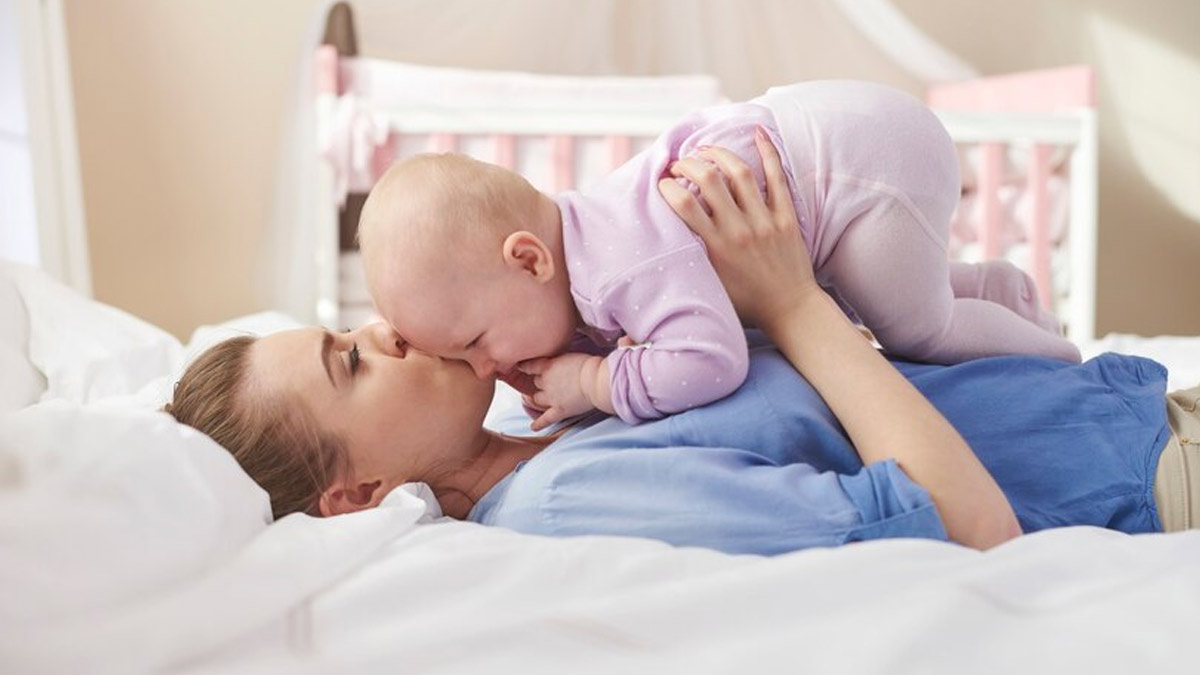
Newborn babies have a special connection with their mothers, driven by the protective instinct of the mother and the baby's dependence on her for sustenance and survival. This bond often leads new mothers to feel a strong need to stay close to their babies, even while they are sleeping. Also known as co-sleeping, this act of sharing a bed with the baby not only aids in breastfeeding but also strengthens the mother-infant relationship. However, we asked an expert whether it was really safe. Here's what she said.
Table of Content:-
Also Read: Essential Tips To Care For A Preterm Baby At Home
Co-Sleeping With Your Baby: Benefits And Possible Risks

Co-sleeping is where parents and babies sleep close to each other, typically in the same bed, described Dr Anitha Raju,Consultant -Neonatologist and Pediatrician, Motherhood Hospitals, HRBR Layout, Bengaluru.
According to her, the act of sleeping together with the baby can strengthen the emotional bond between parents and their baby, make nighttime breastfeeding easier, and provide a sense of security that may help the baby sleep more soundly.
As per the Sleep Foundation, co-sleeping encompasses various sleep arrangements for infants and caregivers, which generally refer to sharing the same room but can also mean sharing the same bed, often called bed-sharing. A specific type of room-sharing is rooming-in, which occurs in hospitals immediately after birth, keeping the infant close to the parent around the clock.
However, co-sleeping also carries significant risks, including an increased chance of Sudden Infant Death Syndrome (SIDS), suffocation, and overheating, especially if safety precautions are not strictly followed, she warned.
What Is Sudden Infant Death Syndrome (SIDS)?

When it comes to co-sleeping, the American Academy of Pediatrics recommends room-sharing but not bed-sharing, highlighting that the latter can pose health risks to children. One of the most serious conditions is SIDS in infants, commonly described as the unexplained death of a baby.
According to an article published in UpToDate, most infants who die from SIDS are between two and four months of age, and 90 percent are less than six months old.
The article further shares that most infants die during sleep, often between midnight and 6 AM, and have no signs that they suffered.
Other causes include injury, heart problems, infection, choking, and suffocation, especially if no specific explanation can be found for their death.
How To Create A Safe Sleeping Environment For The Baby

For new parents who are worried about their babies’ sleep, here are some ways you can create a healthy and safe sleeping environment for them:
- Ensure the mattress is firm and flat to prevent the baby from sinking into it.
- Keep pillows, blankets, and other soft items away from the baby to reduce the risk of suffocation.
- Always place the baby on their back to sleep, which is the safest position for reducing SIDS risk.
- Make sure there are no gaps between the mattress and the headboard, wall, or other furniture where the baby could become trapped.
- Parents should avoid co-sleeping if they are under the influence of alcohol, drugs, or are excessively fatigued, as this can impair awareness and increase risks.
Alternative Sleep Arrangements Parents Should Consider
If you’re underconfident about bed-sharing with your baby, here’s how you can co-sleep without posing health risks for your child:
- Room-sharing with separate sleep space, which involves the baby sleeping in the same room but in a separate sleep space, such as a crib or bassinet,.
- Use sidecar cribs that attach to the side of the parents’ bed, allowing the baby to be close without sharing the same sleep surface.
- Use a co-sleeper bassinet, specially designed to allow the baby to sleep in a separate space while being close to the parents.
- Gradual transition to independent sleeping
Dr Raju ends the interaction by sharing that co-sleeping is a deeply personal choice, and understanding both the benefits and risks, along with implementing safety measures, is crucial for the well-being of both the baby and the parents.
Also watch this video
How we keep this article up to date:
We work with experts and keep a close eye on the latest in health and wellness. Whenever there is a new research or helpful information, we update our articles with accurate and useful advice.
Current Version
